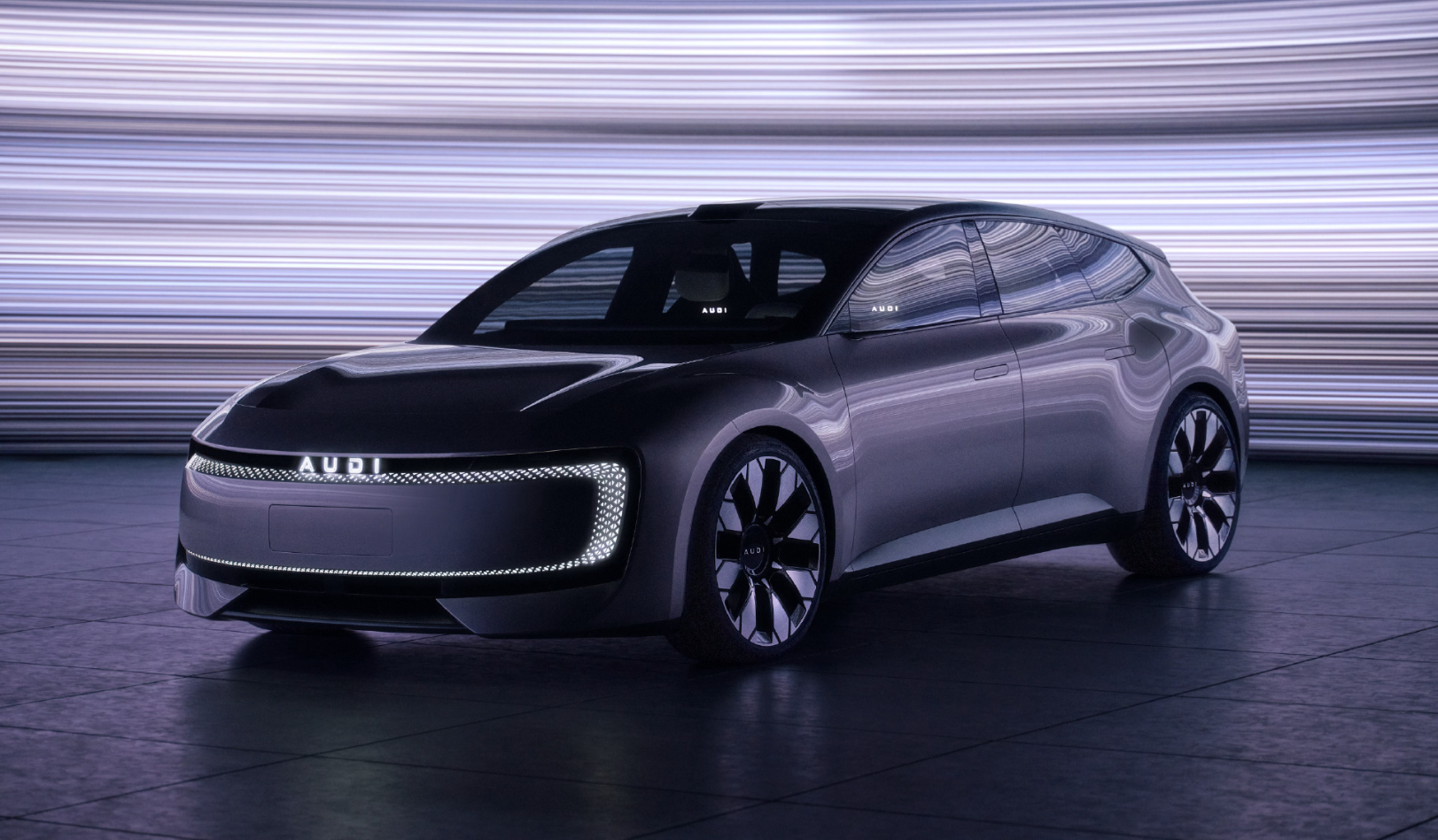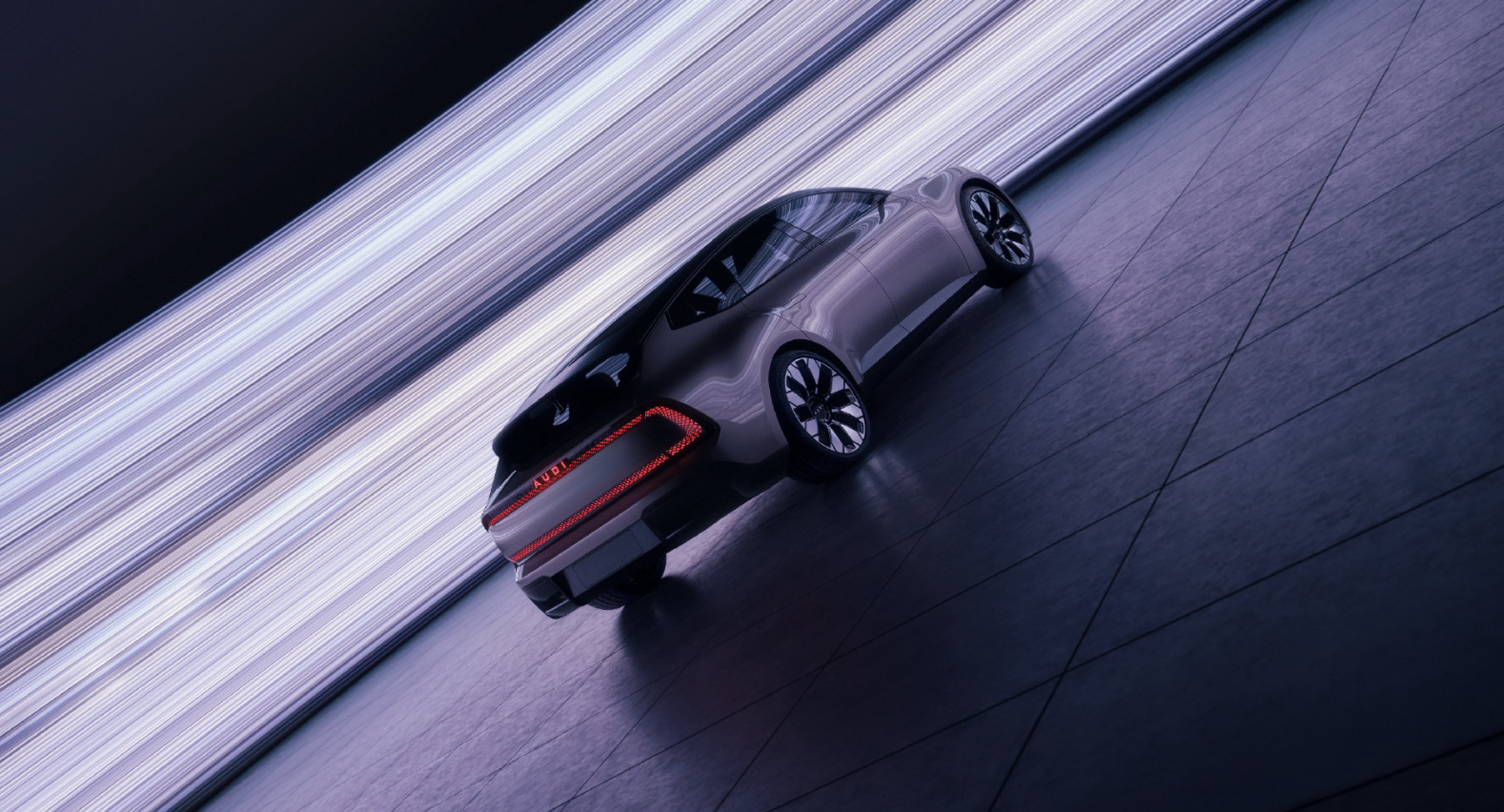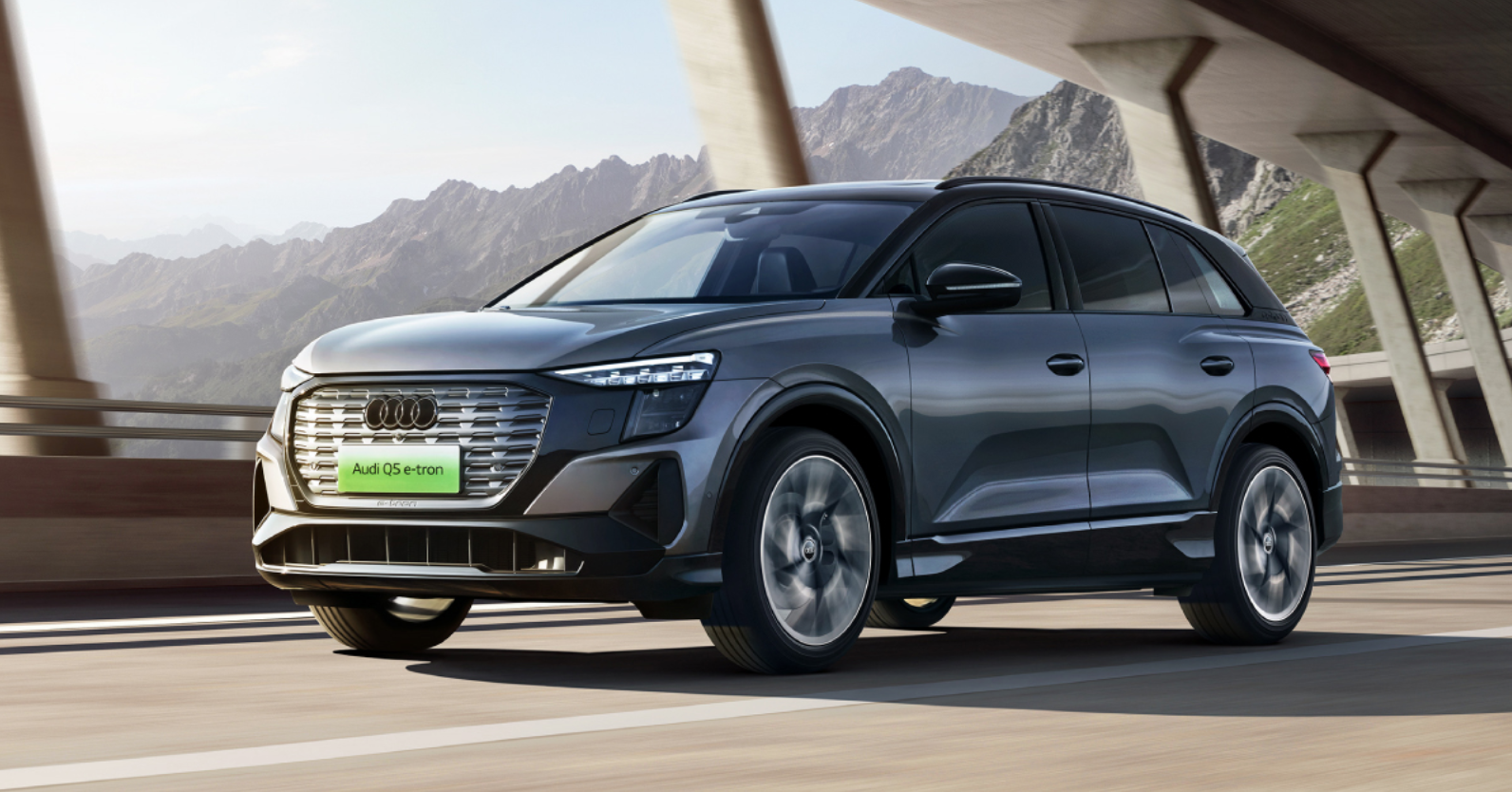Living long enough to see it! Audi's new car ditches the 'four rings', just because they don't want to be a 'generic electric car' anymore?
![]() 11/11 2024
11/11 2024
![]() 431
431
In a "corner barely noticed by anyone", SAIC Audi's new brand was launched.
On November 7, the Audi launch ceremony concluded, with the official unveiling of the new brand and concept car, developed in collaboration with SAIC, focusing on the Chinese pure electric vehicle market. The new brand's approach is both aggressive and unique, continuing to use the Audi brand name but replacing the classic four-ring logo with the "AUDI" letters.
What remains unchanged is that we can still call it Audi.
Audi's decision to abandon the four-ring logo has sparked some controversy. Some believe that without the four-ring logo, Audi "loses its soul" and is no longer instantly recognizable as an Audi model. Others support this move, arguing that the new energy era demands a new face, and traditional automakers need to push new brands. They believe Audi should also let go of the "buff" from the fuel vehicle era and use this opportunity to shed the label of being a "generic electric car".

(Image from AUDI)
SAIC and Audi have adopted a brand-new cooperation model, with the German team leading the design and chassis, and the Chinese team responsible for electric drive systems, intelligent technology output, and production.
Like most European brands, previous Audi models were first developed at the European headquarters before being localized for the Chinese market or produced in China. However, this approach often resulted in a gap between the models and market demand, as well as many designs that were difficult to adapt.
This change in cooperation model can at least bring Audi closer to Chinese consumers, developing models that are "more suitable for Chinese people".
In summary, Audi's new force brand has been launched, collaborating with SAIC to build electric vehicles. Will this approach yield results?
Audi's new "China-specific" electric car has arrived
According to plans, SAIC Audi's new brand will launch three pure electric vehicle models between 2025 and 2027, covering the B-segment and C-segment markets. The first model is positioned as a B-segment pure electric hatchback, with NIO ET5 Touring as its direct competitor, offering a "fridge, sofa, and big TV," and is expected to enter mass production in August 2025.
It's worth mentioning that the exterior design of the AUDI E concept was crafted by C8-generation RS 6 Avant designer Stephan Fahr-Becker. "Wagon cars" are a signature of the Audi brand, and the unique styling and positioning of the new brand's first model suggest a strong confidence in the Audi brand culture.
Understanding the controversy surrounding Audi's logo change, from another perspective, Audi electric cars with the four-ring logo haven't left a great impression either. Restarting with English letters won't have as big an impact on the brand as one might think.
On the technical front, the models of AUDI's new brand are built on a "smart digital platform" jointly developed by both parties. With the support of China's electric vehicle supply chain, the hardware level of AUDI's new cars has caught up with the mainstream, featuring an 800V high-voltage architecture, a CATL 100kWh ternary lithium-ion battery pack, and a Quattro dual-motor all-wheel drive system, achieving a 0-100km/h acceleration time of 3.6 seconds and supporting special progressive steering technology.
Compared to Audi's own PPE platform, the domestic electric platform offers more flexibility in integration and definability, better adapting to China's core demand for space.
For intelligence, which is not traditional automakers' strength, the SAIC team has taken care of everything. The AUDI E concept is equipped with a lidar on the roof, and its sensor layout is highly similar to that of SAIC's IM vehicles. The intelligent driving solution will also be provided by Momenta.

(Image from AUDI)
Currently, Momenta's mapless city NOA developed for IM vehicles has already achieved nationwide operation, and there is a high probability that AUDI's new brand models will also share the same intelligent driving capabilities, including basic operations like smart parking. This intelligent driving solution has also started European adaptation, marking another case of Chinese technology going global.
The interior design and layout of the AUDI E concept are also closer to those of new-energy vehicle startups, featuring a large connected screen center console, the elimination of most physical buttons, and door control via buttons, aligning with domestic new-energy vehicle trends. Although the design is led by the German team, China has a deeper understanding of digital cockpit interaction.
Overall, the new cooperation model effectively integrates the resources of Audi and SAIC, each shining in their respective areas of expertise. Judging solely by product strength, the AUDI E concept is already competitive with mainstream high-end electric vehicles in China.
The question is, can an Audi electric car with a comprehensively upgraded product strength save Audi's new energy business from trouble?
Ditching the "four rings" because the situation is stronger than people
In fact, the current state of Audi's new energy vehicle business is far more serious than just changing the logo.
Taking the Audi Q5 e-tron as an example, its cumulative sales in 2024 were less than 3,500 units. The lower-priced Q4 e-tron performed slightly better, with an average monthly sales volume of over 1,000 units, but there is still a significant gap compared to mainstream new energy vehicles in the same segment. Much of this may be sustained through substantial subsidies from dealers.
Audi FAW's Q6L e-tron and A6 e-tron are also expected to enter the Chinese market next year, and there are still many gaps in product layout.
This is a problem faced by many traditional automakers: lowering prices to increase sales volume can degrade brand positioning, while sticking to price lines can sacrifice sales volume. BMW has also "flipped back and forth" between price cuts and increases, and the results are evident. Neither approach has achieved the desired effects.
Faced with the fiercely competitive Chinese new energy vehicle market, traditional automakers often struggle, showing insufficient determination in transformation and lacking understanding of the Chinese consumer market. This has led to the creation of many "oil-to-electric" models that retain the design of the fuel vehicle era, with outdated electric drive technology and platform concepts, lagging intelligence, and failing to leverage the characteristics of electrification.
In fact, Audi's attitude towards electrification is already quite positive among the BBA brands. Strictly speaking, products like the Q6 e-tron and Q4 e-tron are based on the PPE and MEB pure electric platforms, but on the whole, they still haven't shaken off the influence of fuel vehicles.

(Image from SAIC Audi)
The Chinese consumer market is changing rapidly. In the blink of an eye, new energy vehicles have completed their electrification transformation and moved on to competition at the intelligence level. The vice chairman of the China Electric Vehicle Hundred Person Council stated that while the European and American markets are mainly focused on the basic attributes of electric vehicles such as range and charging, Chinese consumers have entered a consumption stage defined primarily by intelligence.
It's not that BBA brands aren't trying, but the consumption trends in the Chinese market are changing faster, technology is lagging, and brand halos are fading. Price cuts are not the solution; the only way to break the stalemate is to keep up with the mainstream market.
Traditional automakers are all trying the "reverse joint venture" route, collaborating with Chinese automakers to develop new cars in China, meet Chinese market needs, and then sell them overseas. Examples include the smart joint venture between Mercedes-Benz and Geely, the joint development between XPeng and Volkswagen, and Toyota's cooperation with domestic brands to create high-end intelligent driving cars.
Audi's goal in partnering with SAIC to develop electric vehicles is clear – to quickly establish a competitive advantage in the domestic market. Judging from the results, the potential of AUDI's new cars is significant, and their subsequent development is worth anticipating. Whether the logo is the four rings or not is not that important. What consumers want are products that conform to mainstream consumption trends. Whether it's the new A5 with Huawei's intelligent driving system or AUDI-branded pure electric vehicles, what Audi needs to do is take action.
Collaborating with Chinese brands to develop new products in China has effectively shortened Audi's research and development cycle. For Audi, it's not too late to make a move now.
Audi doesn't want to be a 'generic electric car' anymore
At first glance, the development of the Chinese automotive market has been truly rapid. New-energy vehicle startups have fought hard and occupied the mainstream of the market in just a few years, becoming an industry benchmark. Chinese automakers are engaged in a price war, and it's no longer unthinkable to buy a C-segment car for 180,000 yuan. The "consumption class" of cars has been broken, and the halo of traditional brands is no longer important.
Perhaps no one has noticed that traditional automakers have already regarded domestic new-energy vehicle startups as their competitors. Audi is determined to change lanes, abandoning sentiment and driving pleasure to please consumers, recognizing the gap between itself and the mainstream, and competing head-on with Chinese cars using Chinese technology. This is the serious attitude of traditional automakers.
Moreover, traditional automakers have very little time left to "grow up." The top priority is to get rid of the negative impact of being labeled a "generic electric car."
Frankly, Audi's new brand is more like a "new force" facing the era of smart cars. It doesn't matter if the logo and design aren't "Audi" enough. Geely and Zeekr are under the same group, but their designs aren't related. By doing so, the new brand will present a brand-new face to the market rather than making consumers immediately think of Audi's fuel vehicles.
But since both Chinese software and hardware technologies are used, maintaining Audi's brand premium may become more difficult. It will be hard to convince the public with just tuning alone; it remains to be seen how Audi will create unique value. However, compared to "losing its soul," Audi would rather not fall out of favor in the Chinese market. From a market share perspective, traditional automakers' fuel vehicle sales are constantly being eroded by new forces, and the weight of fuel vehicles in consumers' minds is decreasing, reflected in declining sales.
It is high-end new forces like AITO, Li Auto, NIO, etc., that are stealing share from these luxury brands. AITO's M9 has a monthly sales volume of around 15,000 units, ranking first in sales of 500,000 SUVs, an achievement that is difficult for traditional brands to reach.
As the intelligent driving advantages of new-energy vehicle startups further amplify and energy form choices become more diverse, more and more consumers will be attracted to switch camps. Faced with the "cake" being stolen, traditional brands cannot wait until fuel vehicles collapse before making an effort. At least for now, Audi and Volkswagen are showing a positive attitude towards transformation. The next-generation pure electric products from BMW and Mercedes-Benz are not expected to hit the market until 2026 or later. The "Japanese Big Three" have also shown a significant shift in their attitudes towards electrification and intelligence, and more product layouts that meet the Chinese market will be seen next year.
Audi's new brand concept car is confirmed to debut at next week's Guangzhou Auto Show. ElecCarNews will also focus on the new brand's moves in the electric vehicle race and hopes to see the new achievements of Audi's collaboration with SAIC, as well as the day when Audi returns to the mainstream automotive stage.
Source: LeTech






